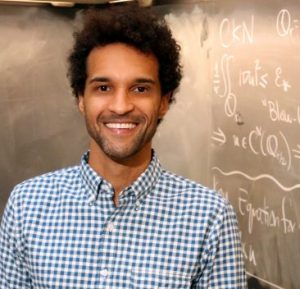
Student Colloquium talk by Professor Michael A. Robert, University of the Sciences
Title: Mathematics of Outbreaks: Exploring Infectious Disease Transmission and Control with Mathematical Models
Abstract: Mathematical models have long been used to study the spread of infectious diseases. From smallpox to influenza to Zika virus, mathematical models help us understand how infectious diseases spread and how we can potentially control their spread. Models are also powerful tools for making predictions about how infectious diseases may emerge and spread in the future. In this talk, I will introduce mathematical models developed to study infectious diseases, and I will discuss my recent work in using mathematical models to study the spread and control of dengue fever and Zika virus, two diseases transmitted by mosquitoes. Dengue fever is found throughout tropical regions of the world and impacts millions of people each year. In recent years, dengue has begun to spread into more temperate areas of the world. Zika virus first emerged in 2015 and spread rapidly throughout the world, infecting millions of people. The recent rapid spread of both viruses is the result of a number of factors including an increasingly connected world and a rise in global surface temperatures caused by climate change. I will discuss how I utilize mathematical models to understand how these two factors play a role in transmission of dengue and Zika. I will specifically discuss how human movement and temperature variation impact the potential for the spread of dengue and Zika in certain U.S. cities and how the potential for emergence of the viruses may change if global surface temperatures continue to rise. I will also briefly discuss how models are being used to plan control strategies for infectious diseases, including strategies involving the release of genetically modified mosquitoes to help control mosquito-borne diseases.






